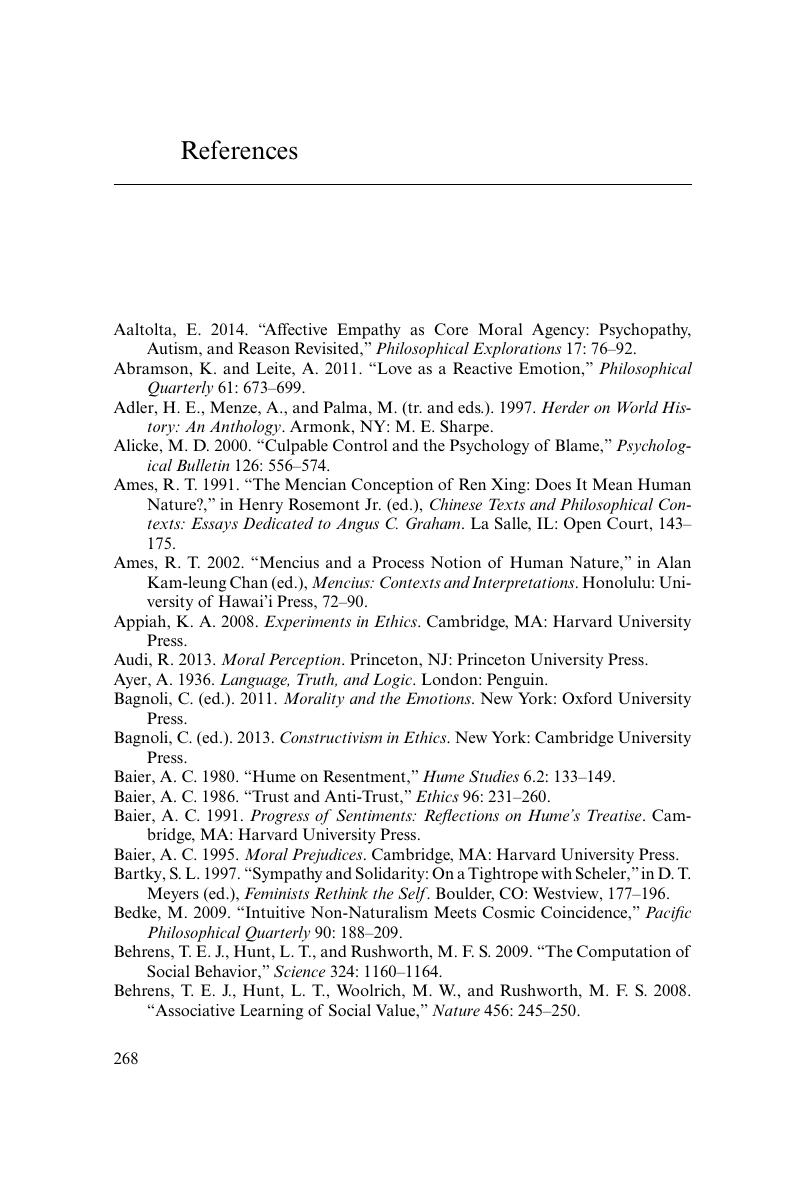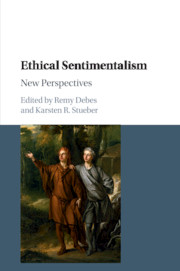Book contents
- Ethical Sentimentalism
- Ethical Sentimentalism
- Copyright page
- Contents
- Contributors
- Acknowledgments
- Introduction
- 1 Interdisciplinary before the Disciplines: Sentimentalism and the Science of Man
- 2 Neo-Classical Sentimentalism
- 3 Moral Epistemology for Sentimentalists
- 4 Evolutionary Debunking Arguments, Explanatory Structure, and Anti-Realism
- 5 Sentimentalist Moral-Perceptual Experience and Realist Pretensions: A Phenomenological Inquiry
- 6 Sentimentalism and Realism in Epistemology and Ethics
- 7 Sentimentalism, Blameworthiness, and Wrongdoing
- 8 Reactive Attitudes and Second-Personal Address
- 9 The Authority of Empathy (Or, How to Ground Sentimentalism)
- 10 Smithian Constructivism: Elucidating the Reality of the Normative Domain
- 11 A Modest Feminist Sentimentalism: Empathy and Moral Understanding Across Social Difference1
- 12 Moral Sentimentalism in Early Confucian Thought
- 13 Whither Sentimentalism? On Fear, the Fearsome, and the Dangerous
- References
- Index
- References
References
Published online by Cambridge University Press: 22 September 2017
- Ethical Sentimentalism
- Ethical Sentimentalism
- Copyright page
- Contents
- Contributors
- Acknowledgments
- Introduction
- 1 Interdisciplinary before the Disciplines: Sentimentalism and the Science of Man
- 2 Neo-Classical Sentimentalism
- 3 Moral Epistemology for Sentimentalists
- 4 Evolutionary Debunking Arguments, Explanatory Structure, and Anti-Realism
- 5 Sentimentalist Moral-Perceptual Experience and Realist Pretensions: A Phenomenological Inquiry
- 6 Sentimentalism and Realism in Epistemology and Ethics
- 7 Sentimentalism, Blameworthiness, and Wrongdoing
- 8 Reactive Attitudes and Second-Personal Address
- 9 The Authority of Empathy (Or, How to Ground Sentimentalism)
- 10 Smithian Constructivism: Elucidating the Reality of the Normative Domain
- 11 A Modest Feminist Sentimentalism: Empathy and Moral Understanding Across Social Difference1
- 12 Moral Sentimentalism in Early Confucian Thought
- 13 Whither Sentimentalism? On Fear, the Fearsome, and the Dangerous
- References
- Index
- References
Summary

- Type
- Chapter
- Information
- Ethical SentimentalismNew Perspectives, pp. 250 - 267Publisher: Cambridge University PressPrint publication year: 2017

